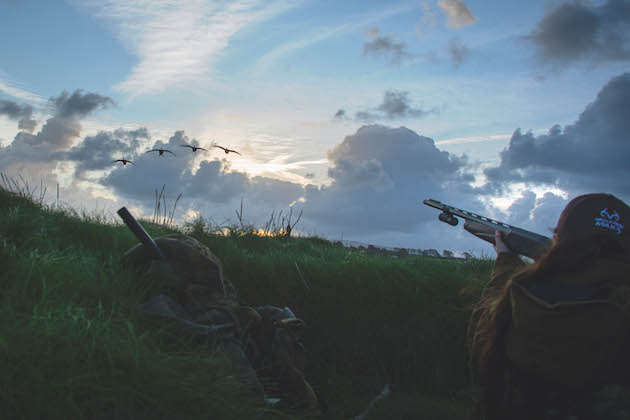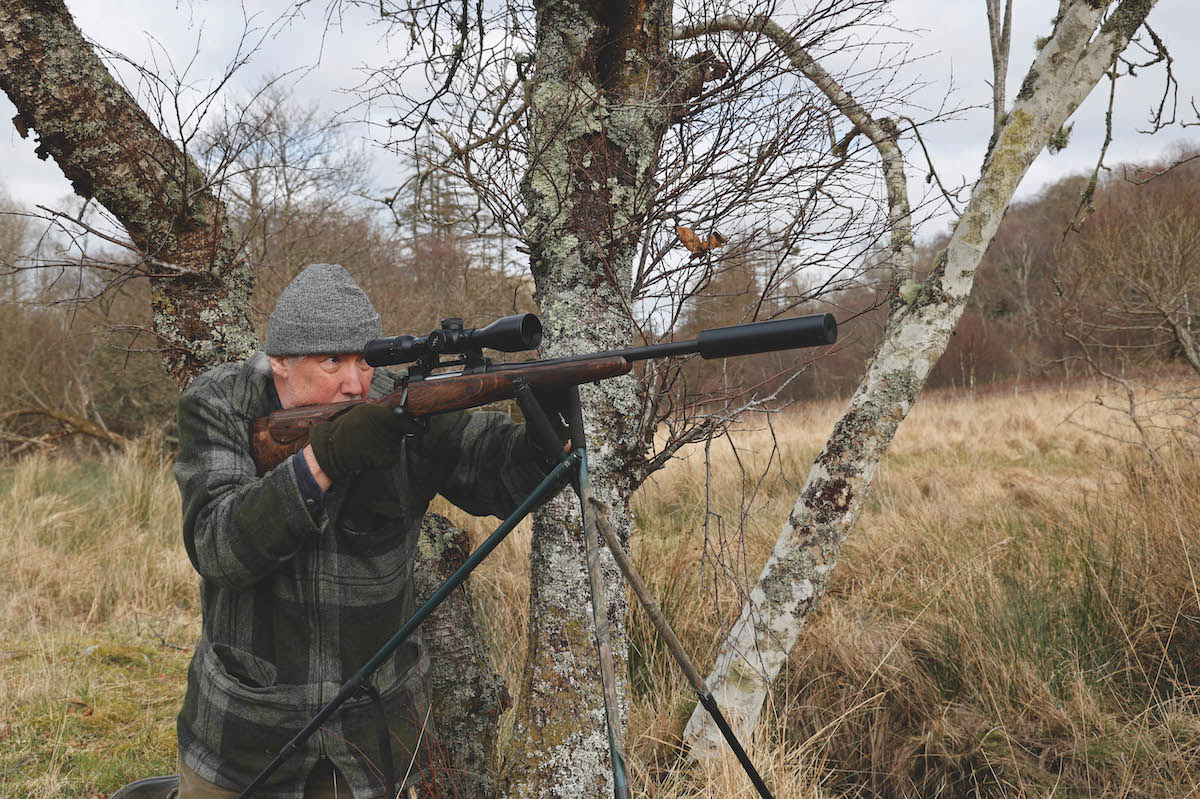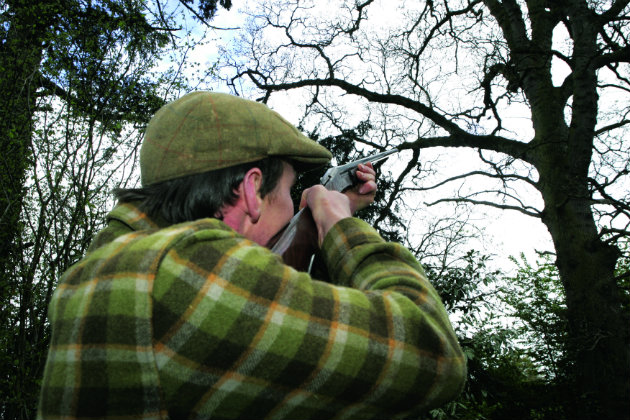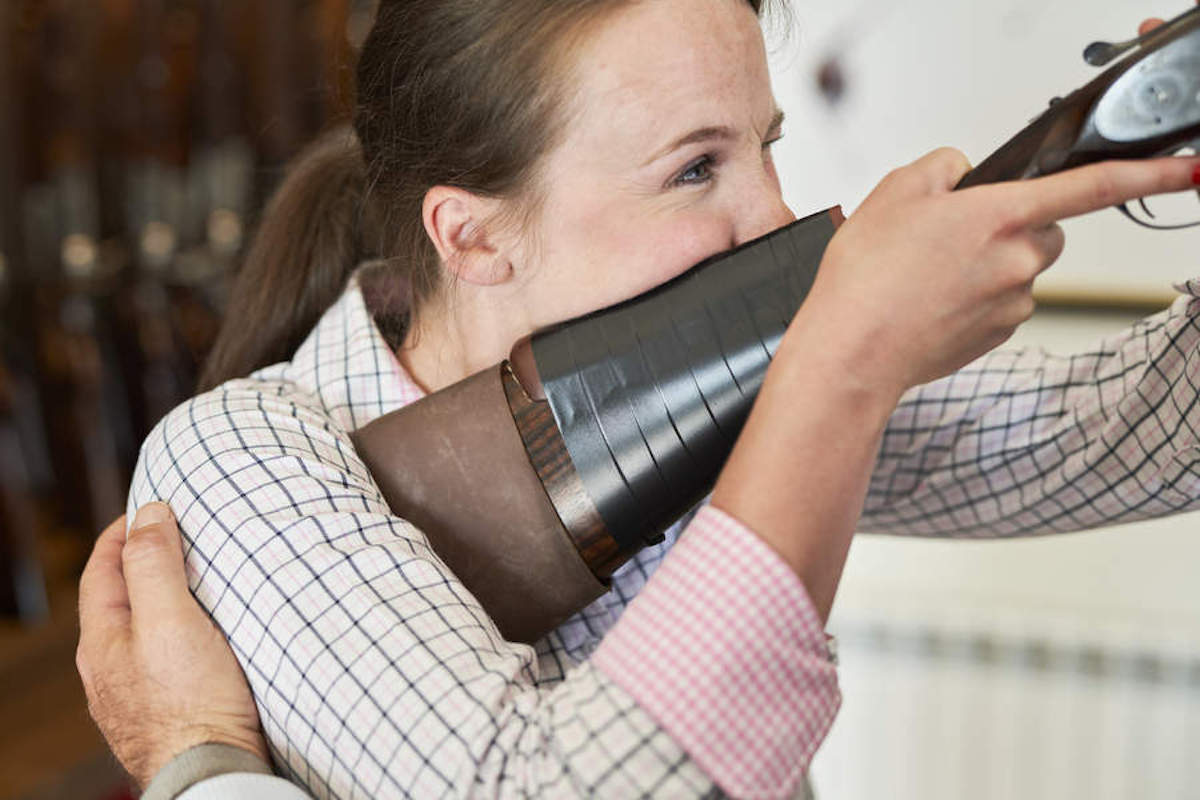Tips for wildfowling
Tom Sykes explains how to make the most of wildfowling chances and shares some tricks that could help to tip the odds in your favour

Wildfowling is a wonderful sport, but not always the most productive in terms of action or shooting opportunities compared with other fieldsports. Making the most of the chances presented is key to success, turning a trip from a birdwatching outing into a hunter-gathering expedition. Here are a few tips for wildfowling I have learned along the way; a few things to increase the chance of making a shot connect to put fantastic meat on the table.
There are a lot of different aspects associated with wildfowling that can make the sport challenging. Weather, mud, light levels and erratic flight patterns, to name a few, all contribute to making it somewhat harder to get on the scoreboard. You may only get one opportunity for a shot after weeks of effort and I like to make it count.

Concealment is key and the line of the birds is easier to read if they are unaware of your presence
Top tips for wildfowling
As with a lot of shooting, you need to start with a good foundation and stance is an integral part of shooting consistently. Having said that, you may as well throw the conventional tuition book out the window. Fowlers do not have the luxury of hard standing surfaces to get a good footing like game or clay shots. We don’t even have the comfort of a nice chair that pivots, set to the perfect height to stand up to shoot pigeons.
What we do have is cold mud that varies in depth and consistency. Trying to get the optimal shooting position is determined by the location. Ducks and geese can take you by surprise from any angle and it is essential to try to maximise the chances by having the best stance for the location. I approach areas differently depending on the ground. (Read our list of the best wildfowling gear)

Without the luxury of a hard standing surface, wildfowlers need to improvise to ensure they have a good foundation
The three main styles are standing, sitting or kneeling, but each one has its positives and negatives. One of my top tips for wildfowling is to try to remain as mobile as possible. Standing can seem like the best option until you sink into the mud and can’t manoeuvre your feet as geese come barrelling down on your position. I nearly pulled my hip out of its socket while writhing around in the mud or at least slipped my feet out of my waders during the panic on many occasions.
It becomes worse the more you paddle up the mud during the flight.
Sitting on the banking or marsh top until I see birds approaching keeps my feet clear from the sludge and allows me to jump into the gutter at the correct angle, depending on how I anticipate the action will unfold.
Sitting is a good technique, especially when decoying ducks on a tide. It is essential to set yourself up with a good arc of fire, anticipating the birds to present a shot. Dry mounting to fine-tune your position is a great way to establish the limits of your reach before the action starts.
Be mindful that it is difficult to pivot in a sitting position to catch up with the birds outside of your arc. One of my favourite stances for the marsh is to kneel as it distributes your weight better, reducing the risk of becoming too stuck in the mud. It also allows you to adjust your stance if birds catch you off guard. Taking a small gardening trowel will enable you to sculpt the area to maximise comfort and performance.
One thing that is guaranteed is that you will still need to be as flexible as a contortionist and will more than likely put your back out at some point, especially when you fire that shot with a mammoth goose load when twisted into an ungodly position.

Bioculars are a wildfowler’s best friend for monitoring movement
Thicker playbook
Pigeon shooting is famous for producing every type of shot imaginable. I would say that wildfowling has a thicker playbook and is often far more extreme, typically due to the adverse weather conditions and light levels.
Teal whizzing past with a blustery wind behind them in the dimpsy half-light take some stopping and are far more challenging than any other flying quarry found in the UK. Reading the bird as a target while understanding range and lead is key.
I have shot geese in a strong wind, where they are sliding right more than going forwards, meaning I had to add the lead to its wing tip as opposed to the bird’s beak. The shooting techniques I employ change depending on the situation. I find that a lot of my shooting can be snap shots, where my instincts do all the work and the trigger is pulled when it feels right. This is especially true with a lot of fast duck action.
At other times, I measure the lead and take my time to ensure the shot will go in the right place. I do this across the board with all varieties of shooting and the technique is determined by the amount of time I have and the style of bird.

Shooting on the clay ground with a wldfowling gun helps to build muscle memory
Bag returns
Practice really does make perfect. Most wildfowling clubs have at least one clay shoot a year. I am always surprised when I watch some of the members miss the majority of the clays. You hear the typical excuses and how clays don’t replicate real birds. I am sure their bag returns reflect their clay shooting statistics.
I believe that clay shooting helps develop your skills as a shooter and that it builds the essential muscle memory and understanding of lead. I recommend using wildfowling guns on clays to get a feel for how they handle and perform. I also try to take new guns for a round or two of clays to iron out any kinks and build familiarity with the operation and performance.
It is important to focus on shots such as birds coming over your head from behind, as well as long crossers, both of which are commonly encountered on the foreshore. It is also a good idea to practise minis and midis, which are handy for getting using to taking on diminutive teal-sized targets.
Familiarity and muscle memory, in turn, improve reaction time and that can make a monumental difference in the field. A fast gun can be perfect, as the shooting opportunities can be similar to a western quick draw. Quick reactions certainly help to add plenty of birds to the bag. Many different elements fall under fieldcraft. Concealment is key to getting birds in range. Wildfowl flaring can be very frustrating and produce more challenging shots. The line of the bird is often easier to read and anticipate if they don’t know you are there.
Spotting birds early will help you predict the shot and run through scenarios before taking aim. There is nothing worse than being caught off guard and rushing the shot.
Binoculars are a wildfowler’s best friend for monitoring movement and identifying birds from great distances. There are many non-target species that even replicate the flight pattern of quarry. Being able to quickly identify quarry can add crucial time to achieve a well-placed shot. Reconnaissance and understanding bird movements helps to predict the types of shots you may encounter. Information like this helps me to decide the gun, choke and ammunition combination that will best suit the outing ahead.
Into the wind
It is also crucial to understand how the weather impacts shooting. When it is frosty and inland ponds are frozen, birds will be pushed down to the foreshore. Equally, a strong wind makes for good shooting as it keeps birds low. Also, you should know that birds will land into the wind.
What I love about wildfowling is that you’re always learning. Every trip produces different outcomes, as no two days are alike. The action is never dull and every shot seems to feel far more earned than any other shooting I take part in.
Hopefully, these points will help aspiring wildfowlers hone their skills and point them in the right direction. Improving your shooting by paying for a coaching session, finding a gun that fits you and understanding your quarry will add birds to the bag. (Read our suggestions for the best jackets for wildfowling.)
A final tip for wildfowlers
I once read an old piece in Shooting Times that said there simply aren’t enough grandfathers to go round. I think it was written by that famous sporting writer Gough Thomas. The point he was making was a very good one. Lots of people are taught to shoot by their grandfathers or fathers but many people take the sport up later in life or have grandfathers who aren’t actually into shooting. It is true. though, that you learn an awful lot from having a mentor. If you’re new to the sport, why not try and find somebody who can take you out and show you the ropes? Far from feeling put upon, those who really love wildfowling are often keen to show newcomers what’s what, I think. After all, we all want there to be a next generation.








